Whitmire: Why Boston’s Most Racially Diverse School Could Also Be the Country’s Most Interesting School Integration Story
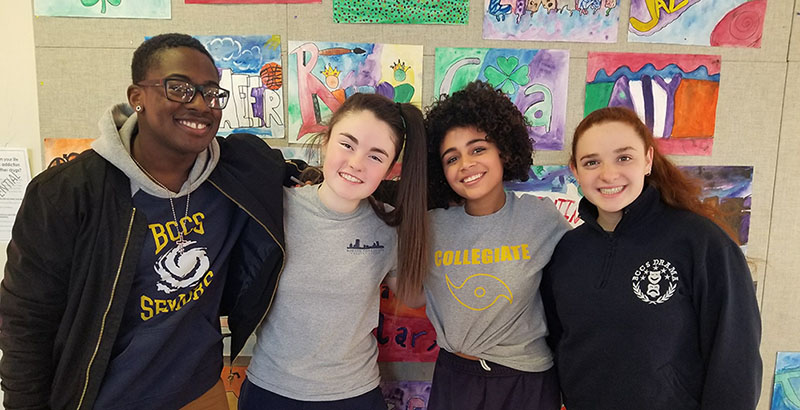
Updated Jan. 30
BOSTON
(Or, to be exact, Dorchester. To be more precise, the Savin Hill neighborhood of Dorchester. To be extra-precise, the houses on this particular street are mostly owned by white, blue-collar retirees. In Boston, this is identity, and it shifts block by block. Here, this stuff matters.)
….
In a city that incessantly agonizes over its racism, a city with a busing history of infamy, a city with public/private schools that show stark racial divides, here’s a fact that may surprise you: The most integrated school in the entire city appears to be a charter school, Boston Collegiate.
Every day, students whose families live in hyper-segregated Boston neighborhoods — Dorchester, South Boston, Roxbury, and Mattapan — arrive at Boston Collegiate to live out an academic day with students not from their neighborhoods, students who split about 50–50 between white and non-white.
Nothing here is always perfect, and everything takes a lot of extra diligence. For the staff, it can be exhausting at times. But it works.
What these students experience is something that students in Boston’s traditional public schools (10.8 percent white/Asian in grades 7-12) and Boston’s exam schools (Boston Latin: 76 percent white/Asian) don’t always experience — actual diversity. And it’s happening in a charter school, an entity that critics say contributes to segregation.
The white parents sending their children here are not liberal Boston college professors looking to expose their children to a more diverse student population. The most common jobs held by white parents: cops, firefighters, nurses, many of them from South Boston, a neighborhood made famous by Hollywood, and usually not in a good way. The same pretty much goes for the black parents, only you have to mix in some more downscale jobs, such as janitors and child care providers. Their neighborhoods: Roxbury and Mattapan.
Why would blue-collar parents seek out diversity for their students that they don’t seek in choosing where to live? Roughly, the answer works out like this: For white parents, especially parents whose children didn’t get into an exam school and balk at private school tuition (and for whom traditional public schools are unthinkable), Boston Collegiate is a pathway into a good college. For black parents, the reasoning is similar. Private school tuition is far out of reach and the traditional schools unpalatable, thus leaving Boston Collegiate as the place where their kid has a shot at a good college.
Even more interesting about Boston Collegiate: It’s not an “intentionally diverse” charter school. There are no special admissions rules or special boundaries allowing this school to be diverse. It just works out that way.
Thus, given its location in a highly segregated city, and the national debate over the rising number of racially segregated schools, Boston Collegiate may be more than just the most integrated school in Boston; it may be the most racially interesting school story in the country.
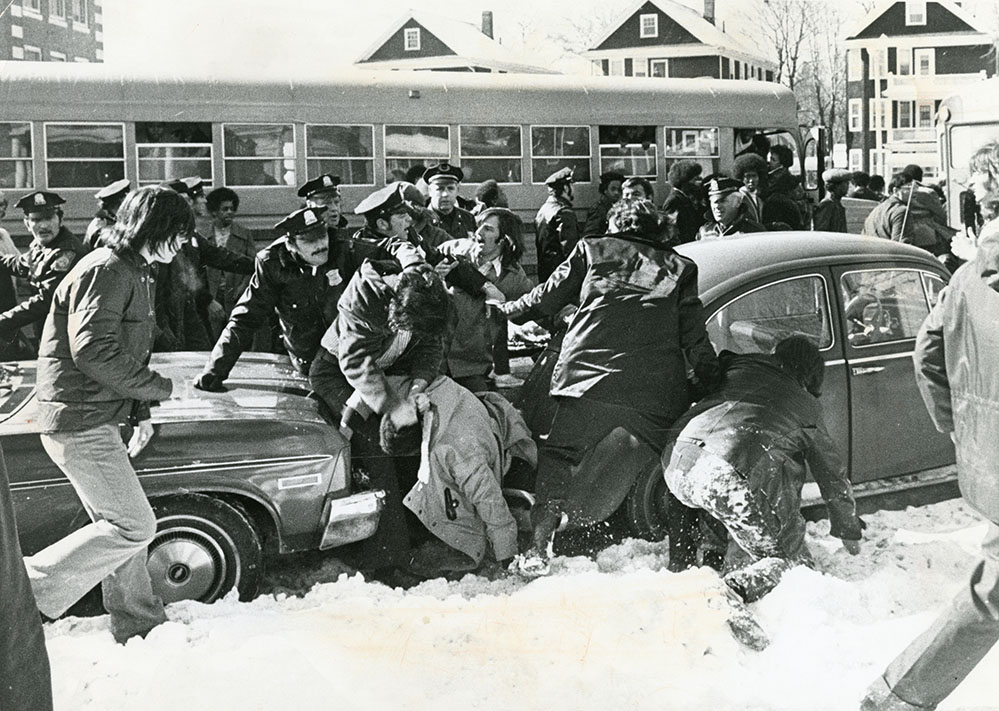
The history
The school got launched in 1998 in an old warehouse in South Boston. Its original co-founder, Brett Peiser, now runs the acclaimed Uncommon Schools network. Then called South Boston Harbor Academy, it drew its student population from the low-income, almost all-white South Boston neighborhood, which had been devastated by the busing clashes.
Looking to expand, and also to diversify, in 2004 the school moved to Dorchester and changed its name to Boston Collegiate. Soon after the move, the school grew to a roughly 50–50 racial mix, where it has remained. Today, about 700 students attend, in grades 5–12.
Students win a spot here via an electronic lottery, which makes balancing racial enrollment tricky. The only way to affect that ratio is by recruitment efforts. For white parents, not much outreach is needed (because the school started in South Boston, many parents still think of it as a “white” school, and feel comfortable sending their kids there, despite the move).
For both white and black parents, the most effective word of mouth is: “I hear one of their graduates got into Brown (or another prestigious college).” The college record here is reasonably good, considering that most of their students are first-generation college-goers, and half qualify for free or reduced-price lunches.
So far, only two Collegiate classes of alums have reached the six-year mark where college success is measured. Of those 55 students, 56 percent have earned bachelor’s degrees. For context, 9 percent of poor kids earn those degrees in that time frame, while 70 percent of kids from the top-earning families do.
Surviving and thriving with constant race issues
Considering the sharp racial issues in Boston, and the racial diversity at Boston Collegiate, it might seem logical that teachers would want to sidestep or straddle touchy issues. Like Donald Trump, or Black Lives Matter, or national anthem protests.
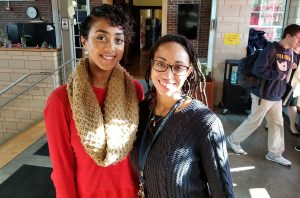
But I get a puzzled look when I raise that with teachers Nadiya Ledan and Wintana Yohannes, who also co-chair the Multicultural Club. That option was never even considered. Just the opposite happens here: No ducking; everything gets hashed out, sometimes painfully.
At a recent staff professional development gathering, the focus was on how to have “courageous conversations,” said Yohannes. One example of how that works: Collegiate conducts “Cross Grade Communities,” multi-grade small group sessions. The most recent session: microaggressions. What are they? Have you experienced them? Discuss what you can do to improve school climate.
Each year, the students get more comfortable talking about these topics in racially mixed groups. But that’s the world in which they live. More tricky than students are the parents. As one teacher bluntly put it, the students here are more (racially) evolved than their parents.
The big parental flare-up broke out in 2014 after the Ferguson, Missouri, riots over the shooting of a black teenager, Michael Brown, by a white police officer. Word got out that Boston Public Schools students planned a rally in Boston Common that December, and some Collegiate students indicated that they wanted out of school to participate as well.
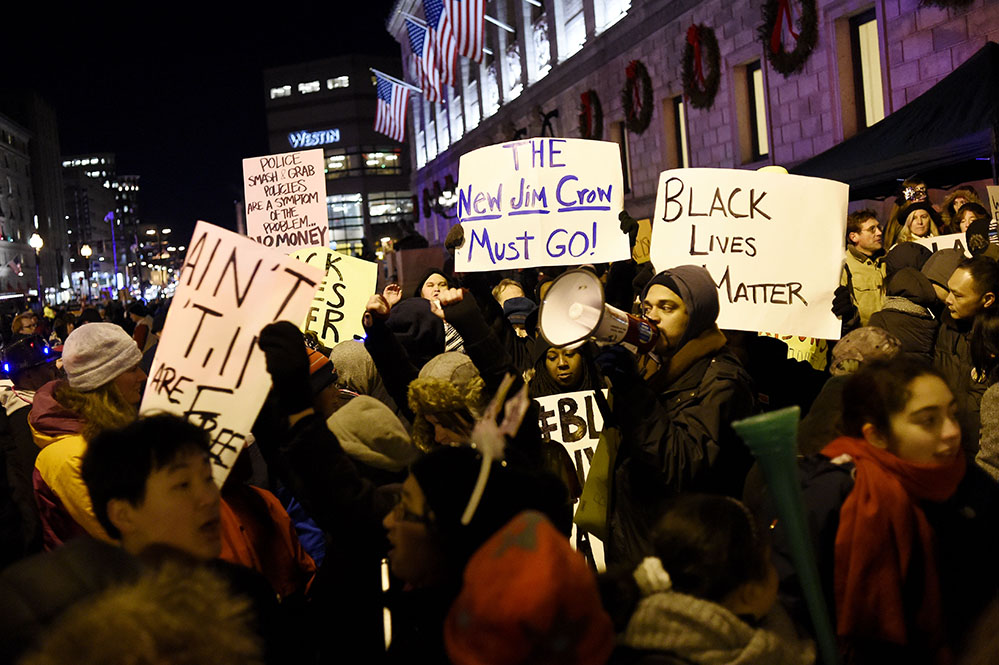
Collegiate executive director Shannah Varón, who has run the school for the past seven years, sent out word to the parents: Please discuss with your child. If your student wants to participate, and you grant permission, the school will excuse the absence.
Seemed reasonable, at least to Varón. But the blowback was immediate and fierce, especially from families where a parent was a police officer. “I was rocked to my core. What I got back was such vitriol.” Varón, leaving out inflammatory language, summarized the reaction this way: “How can you endorse kids walking out of school? My husband puts his life on the line every single day!”
In the end, only about 30 students ended up going to the demonstration. (It’s an academically focused school: Who dares miss class?) The students got over it quickly. The parents less so. A constant undercurrent at Collegiate is hearing white parents suggest that school standards are slipping: fewer dress code demerits, for example. What Collegiate staff see as “equity” adjustments, some parents see as signals of heading downhill.
“I believe it does prepare them for college. One of the struggles for urban youth is confronting differences, and our kids confront differences every day. Our kids learn to raise their hands when white kids have their hands up.”
— Shannah Varón, Boston Collegiate executive director
The latest equity issue to arise there: Last year, the school staff decided to start phasing out its “honors” English classes in ninth and 10th grades, essentially tracked classes to smooth the way into Advanced Placement classes. Yohannes said her ninth-grade honors class was 75 percent white.
“We’re hoping more students will have a chance at AP.”
Why go to this trouble?
On the surface, life might seem easier if the school were all black or all Hispanic, as are many charter and traditional schools in urban neighborhoods, or all white. Balancing all these racial issues sounds exhausting.
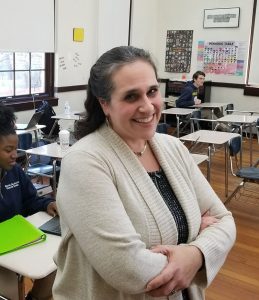
“Every day I try to walk a line, and the line is hard to find,” said Varón. But Varón and the teachers I interviewed seem to believe it is all worth it.
“I believe it does prepare them for college,” said Varón. “One of the struggles for urban youth is confronting differences, and our kids confront differences every day. Our kids learn to raise their hands when white kids have their hands up.”
The biggest endorsement came from the students I talked to. “My best friend is Hispanic,” said junior Emily Foster, who is white. “This would never have happened had I not gone here. I go to her house, and on certain holidays we play games she played back in Mexico.”
Julia Damatin, a white senior, pointed to Anya Tisdale, who has a black father and a white mother, and said, “Anya is mixed, but she’s just Anya. At the end of the day, they are all our peers.” That experience, said Damatin, makes her “feel like we’re going to be one step ahead of everyone else in college.”
Said senior Korede Oyenuga, who was born in Nigeria and moved here at age 3, “This school doesn’t allow race to define you. You choose to define who you are.”
The most revealing comment, perhaps, came from Foster, a reflection of how racially isolated Boston is. “You don’t realize how diverse this school is until you step out of school.”
One more sign that the struggle here is worth it: There are 1,500 students on the waiting list.
Help fund stories like this. Donate now!

;)
